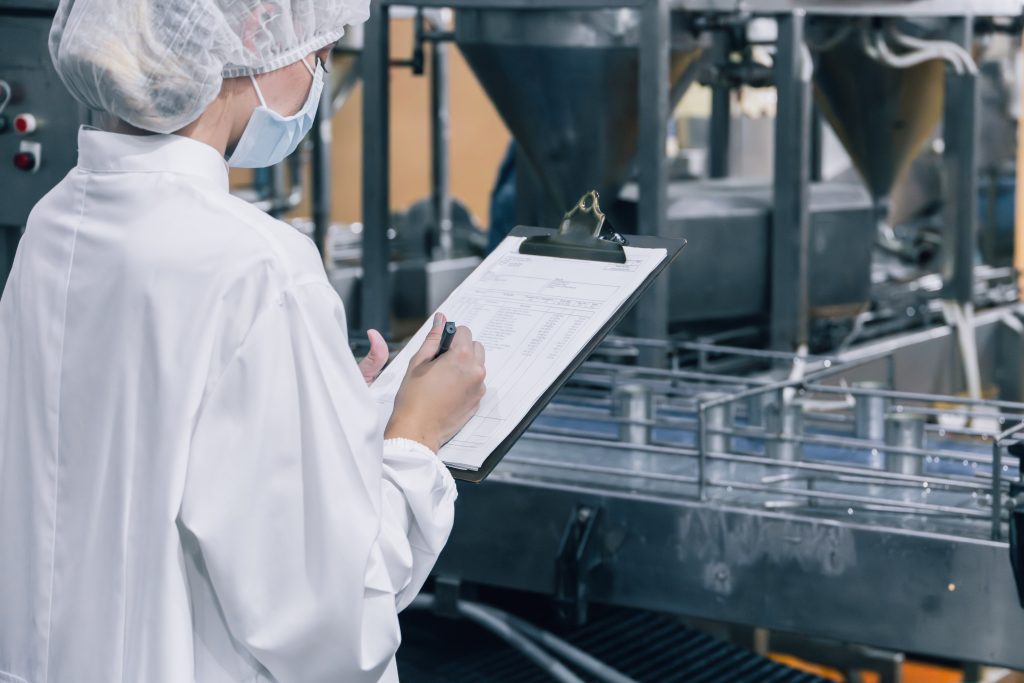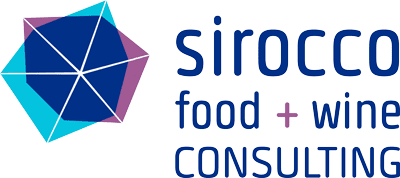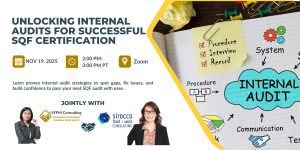Food businesses play a vital role in Canada’s economy. To ensure food safety, quality, and fair market practices, the Canadian Food Inspection Agency (CFIA) is responsible for overseeing compliance across the industry. Any business holding a Safe Food for Canadians (SFCR) license-whether importer, exporter, or processor distributing products across provinces-is subject to CFIA inspection.
As a food business, you may wonder: When will I be inspected? How often should I expect inspectors to visit? This blog explains how the CFIA determines inspection frequency through its Establishment-based Risk Assessment (ERA) model.
What is the ERA Model?
The ERA model is a science- and risk-based system that evaluates both the inherent risks of an establishment (such as a seafood processor, meat facility, or importer) and the effectiveness of its control measures. Its purpose is to help CFIA prioritize inspections across thousands of regulated businesses in Canada.
Rather than treating all businesses equally, ERA directs more inspection resources toward higher-risk operations, while reducing the burden on lower-risk ones. Importantly, this does not lessen regulatory requirements, it simply ensures CFIA resources are used efficiently and effectively.
Key Factors in the ERA Model
Commodity Risk
CFIA considers the risk level of the products you handle, including:
- Inherent contamination risks.
- Past outbreaks and recalls.
- Product end use and intended consumer.
For example, meat products face higher scrutiny due to their complex processing and high risk of bacterial contamination. This is especially true when meat products are considered ready-to-eat (RTE) and where the risk of cross-contamination with microbial pathogens is high. Imported meat must be sourced from an approved foreign establishment and undergoes CFIA inspection before entering the Canadian market, while domestic meat shipped across provinces requires daily inspector presence.
Similarly, fish, dairy, eggs, and fresh produce are inspected more frequently than lower-risk commodities like nuts, seeds, condiments, or baked goods.
Furthermore, past outbreaks trigger enhanced inspections. For example:
- The 2023 enoki mushroom recall over Listeria monocytogenes led to mandatory listeria testing for all imports.
- Recent Iranian pistachios with Salmonella concerns similarly triggered mandatory testing protocols.
Ready-to-eat (RTE) products, especially those that support pathogen growth (e.g., deli meat, cut vegetables, cold-smoked salmon), receive heightened scrutiny. Foods targeting vulnerable populations, such as infant products (refer to the latest Cronobacter recalls), are also tightly regulated.
Establishment Controls
Inspection frequency also depends on the license holder’s operational scale and food safety systems.
- Larger-volume processors (e.g., Grossing $500K-1 Million and over) are inspected more frequently.
- Facilities with recognized third-party certifications (e.g., GFSI) often face reduced oversight, since certification signals robust food safety practices.
Compliance History
Your compliance record directly impacts your inspection profile. CFIA considers:
- Previous inspection findings.
- Past enforcement actions or recalls.
- Responsiveness and timeliness of corrective actions.
Businesses with a strong compliance track record benefit from less frequent inspections compared to those with repeated issues.
How Does ERA Work in Practice?

Each establishment is scored based on risk and control indicators. This score determines the inspection profile: how often inspectors visit, the depth of inspection, and focus areas.
The system is dynamic, your score can change as you expand operations, improve controls, or experience compliance challenges.
Example:
- A dry mix manufacturer with strong HACCP records and no recalls may be inspected infrequently.
- A ready-to-eat salad producer serving hospitals, especially one with a recent recall, will face much more intensive oversight.
Tips for Businesses Under the ERA Model

- Keep your SFCR license accurate: Don’t include commodities you don’t actually process or import. Doing so unnecessarily raises your risk profile.
- Maintain current contact details: Ensure CFIA can reach you quickly, and respond promptly to inspectors.
- Strengthen Preventive Control Plans (PCP): Keep documentation audit-ready at all times, and ensure staff consistently follow procedures.
- Manage compliance history carefully: Address non-compliances before deadlines, expect follow-up inspections after any incident, and consider requesting an ERA report from your inspector.
- Focus on high-risk areas: Pay special attention to RTE (Ready To Eat) products, allergen management, and exports requiring official certification.
Final Thoughts
The ERA model allows CFIA to apply its limited resources strategically while ensuring Canadians have access to safe, compliant food. By understanding how ERA works, businesses can better align operations with regulatory expectations, strengthen compliance, and reduce inspection burdens.
Strong food safety practices not only protect public health but also position your company as a trusted, low-risk operator which saves you time, resources, and stress during inspections.
Authored by Sean Xia, Food Safety Consultant
Since 2014, Sirocco Food & Wine Consulting Inc. provides regulatory and certification services to food processors, importers, exporters in Canada and the United States. We specialize in FSMA (FSVP and Preventive Controls for Human Food) and Canadian SFCR/PCP Regulatory Compliance. Our consulting, internal auditing and training services focus on GFSI (SQF) and HACCP certifications.






